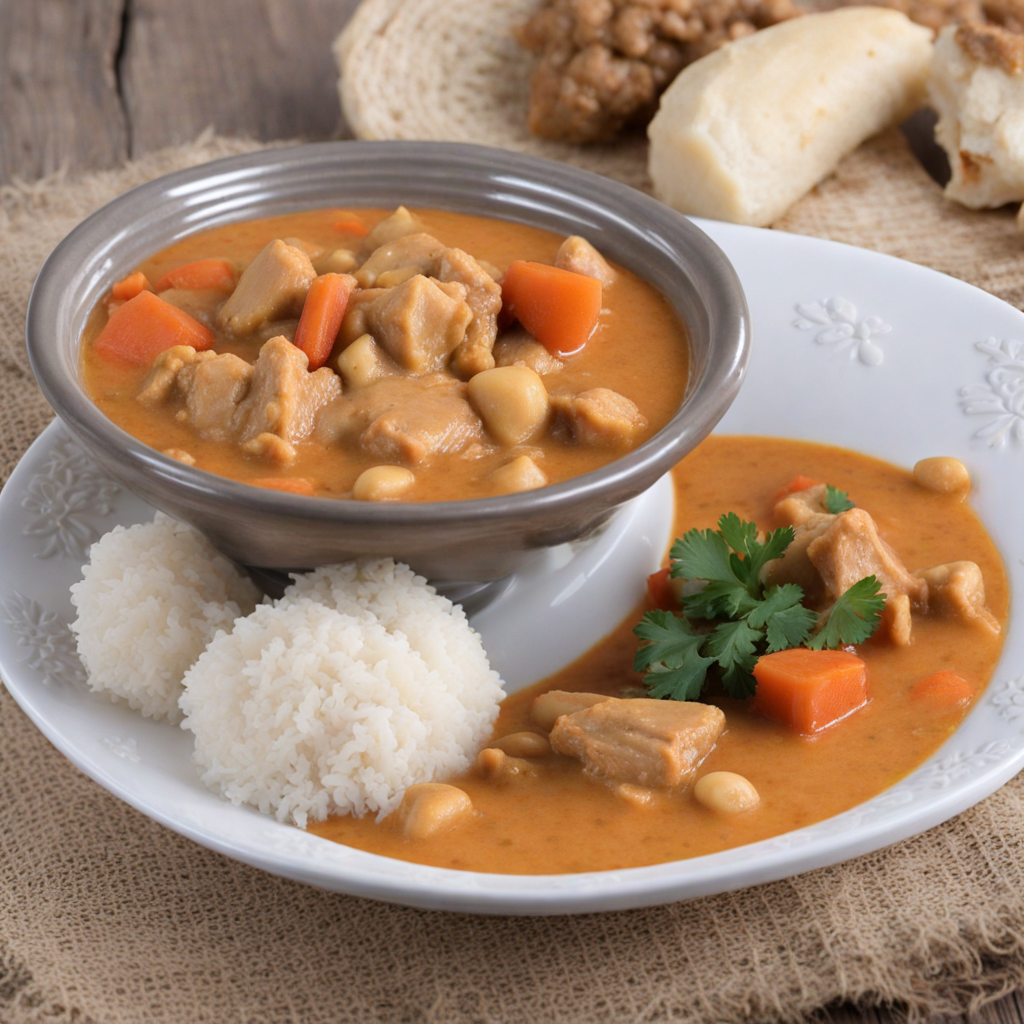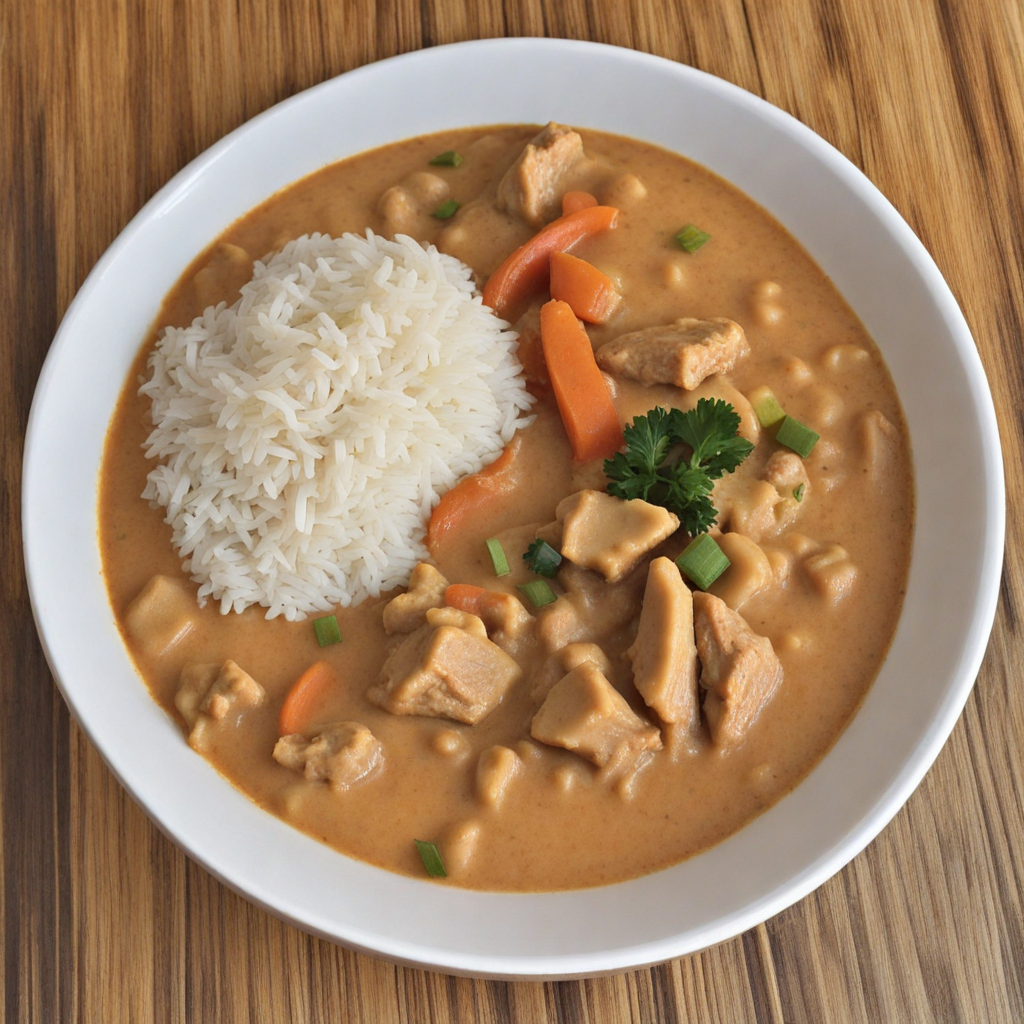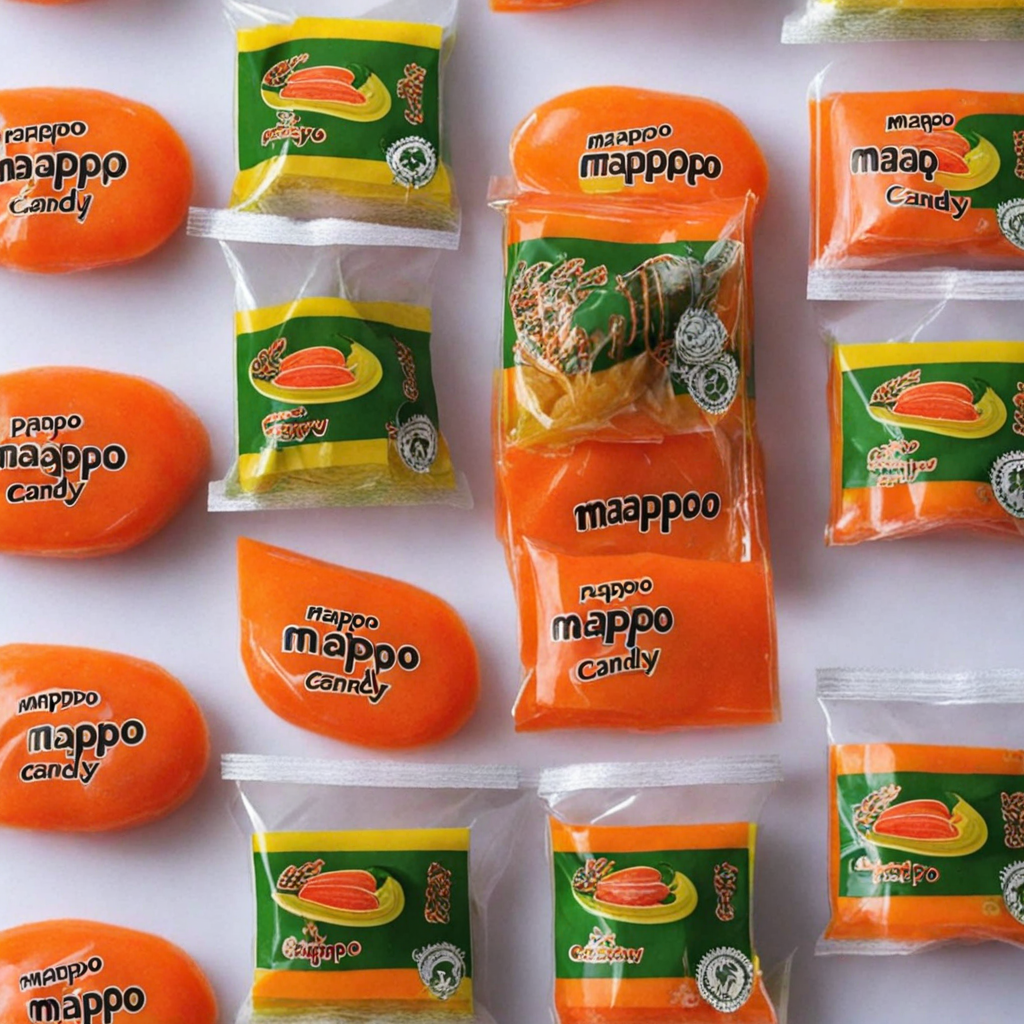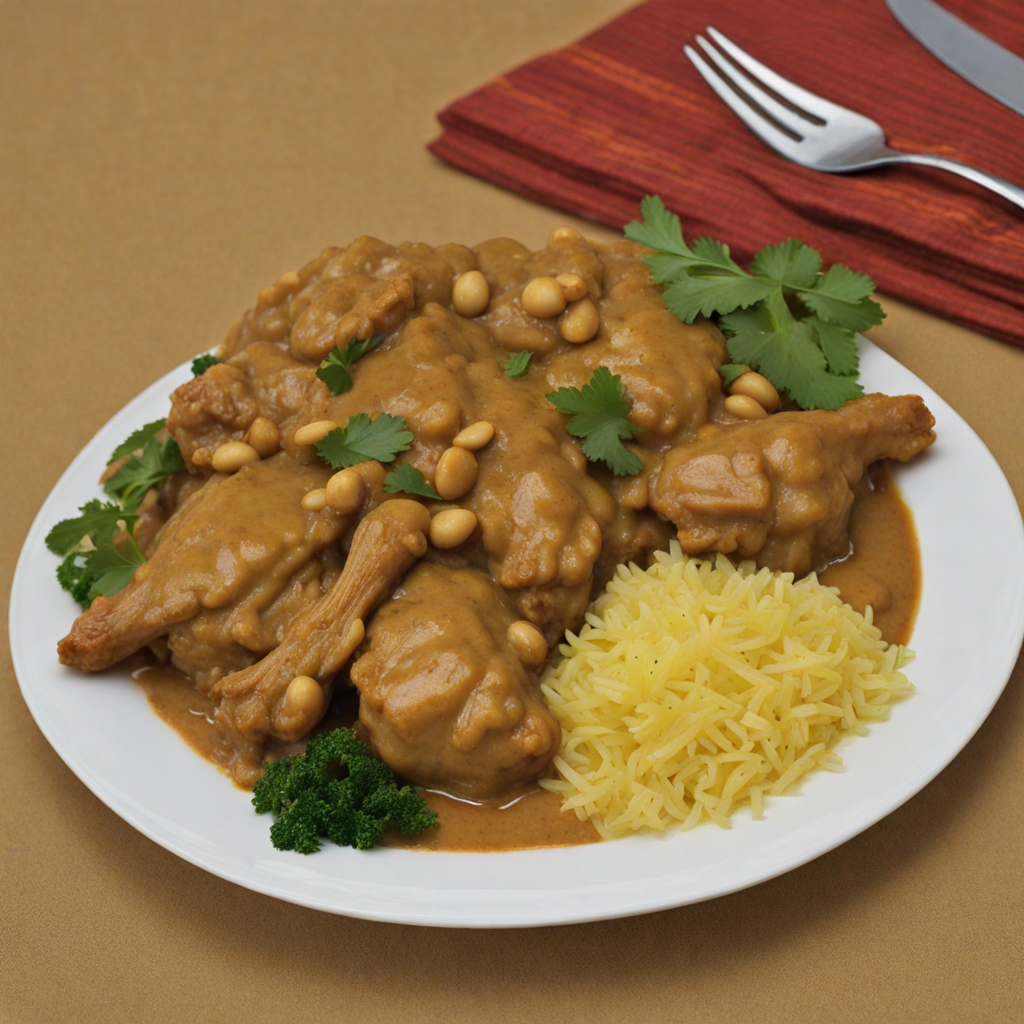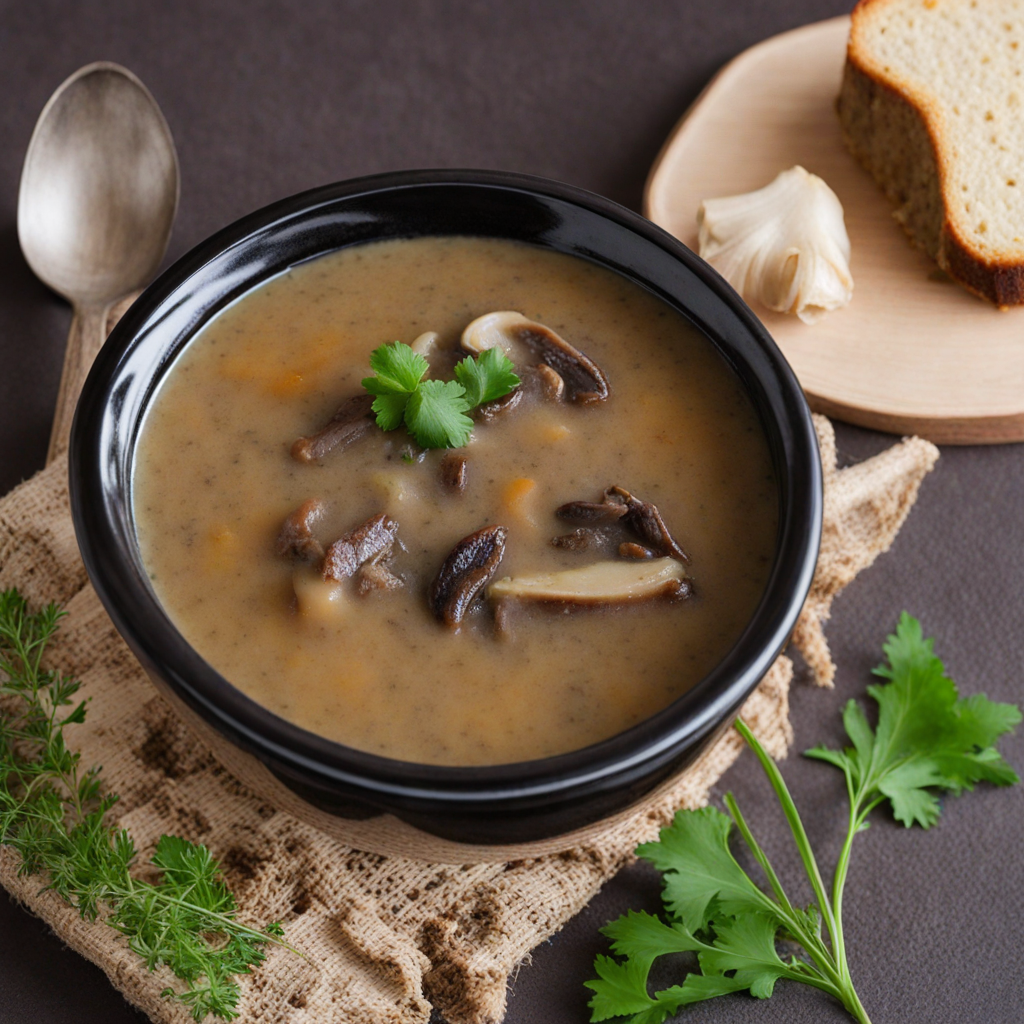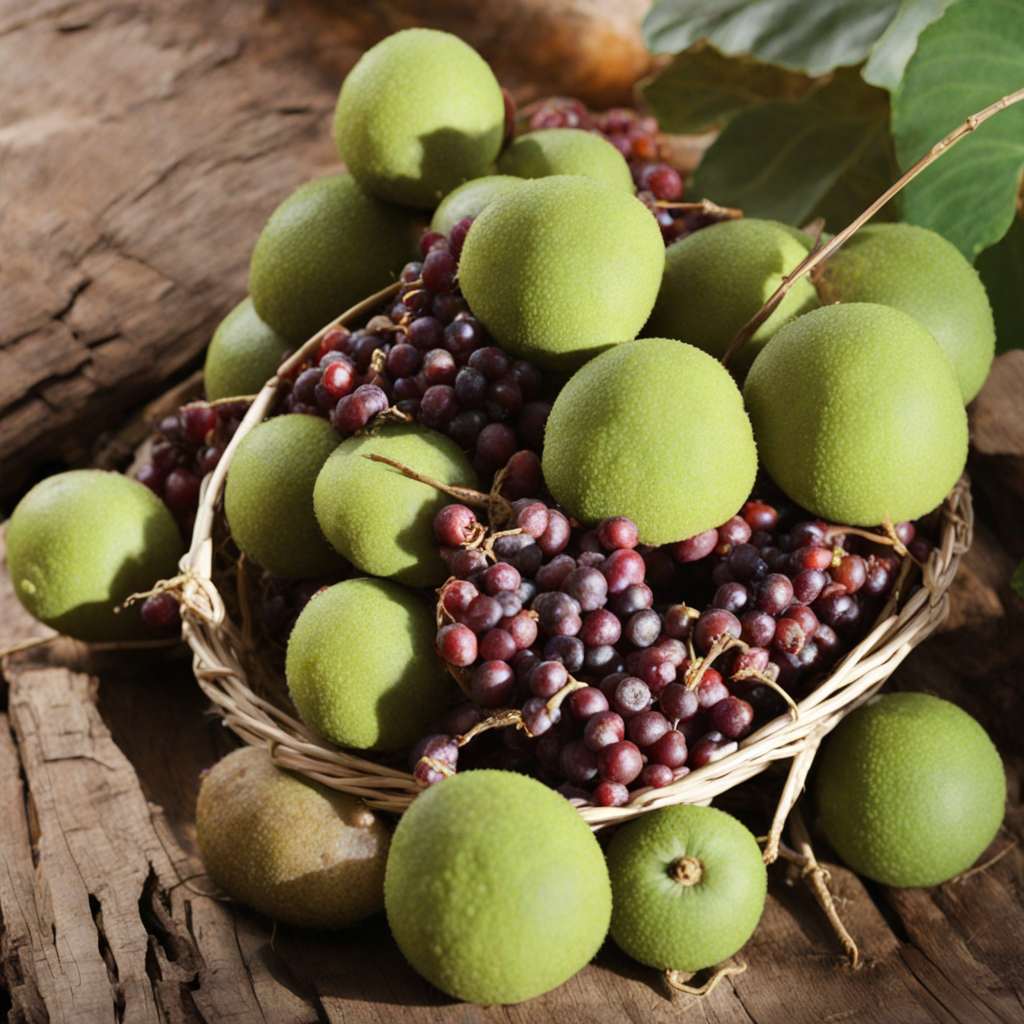Dovi
Dovi is a rich and flavorful peanut butter stew that originates from Zimbabwe, showcasing the country's vibrant culinary traditions. This dish is often made by simmering chicken, beef, or vegetables in a smooth, creamy sauce crafted from ground peanuts, which not only thickens the stew but also imparts a distinct nutty flavor. The combination of spices, including garlic, ginger, and sometimes chili, adds depth and warmth, making Dovi a comforting dish perfect for sharing with family and friends during gatherings or festive occasions. One of the key elements of Dovi is its versatility; it can be adapted to include various proteins or be made entirely vegetarian by incorporating seasonal vegetables like potatoes, carrots, and spinach. The dish is typically served with a side of sadza, a staple maize porridge that perfectly complements the rich sauce, allowing diners to fully savor the delicious interplay of textures and flavors. The combination of the creamy peanut sauce with the hearty base creates a satisfying meal that is both nourishing and reminiscent of home-cooked comfort food. In addition to its delightful taste, Dovi is a reflection of Zimbabwe's culinary heritage, where the use of local ingredients and traditional cooking methods are celebrated. The dish evokes a sense of community, as it is often prepared in large pots and enjoyed family-style. With its unique flavor profile and comforting qualities, Dovi invites anyone looking to explore new tastes to dive into the essence of Zimbabwean cuisine, offering a delicious experience that warms the heart and delights the palate.
How It Became This Dish
The Culinary Heritage of Dovi: A Taste of Zimbabwe #### Origins and Ingredients Dovi, a traditional dish from Zimbabwe, is a rich peanut butter stew that often features chicken or vegetables, embodying the essence of Zimbabwean cuisine. Its roots trace back to the diverse agricultural practices of the various ethnic groups in Zimbabwe, including the Shona and Ndebele. The dish is deeply entwined with the history of peanut cultivation in the region, which dates back to pre-colonial times. Peanuts, or groundnuts, were introduced to Africa from South America by Portuguese traders in the 16th century. They thrived in Zimbabwe's climate, quickly becoming a vital crop that supported both the economy and local diets. The primary ingredients of Dovi include ground peanuts, meat (usually chicken, but sometimes beef or goat), and a mix of vegetables such as onions, tomatoes, and sometimes leafy greens. The dish is notable for its creamy consistency and nutty flavor, which is achieved by slow-cooking the peanuts to release their oils and flavors. The preparation of Dovi often varies by region and family tradition, with some recipes incorporating spices like paprika or chili for an extra kick. #### Cultural Significance Dovi is more than just a meal; it is a symbol of community and heritage in Zimbabwe. Traditionally, it is served during special occasions such as weddings, communal gatherings, and festivals. The preparation and sharing of Dovi often involve family and friends, reinforcing social bonds and cultural identity. In many Zimbabwean households, Dovi is considered a comfort food, associated with warmth, hospitality, and familial love. Peanut butter, the key ingredient in Dovi, holds a special place in the hearts of many Zimbabweans. It symbolizes sustenance and nourishment, with its rich nutritional profile providing essential proteins and fats. As such, Dovi is often considered a dish of abundance, served to honor guests and celebrate important milestones. Moreover, Dovi is linked to the agricultural practices of Zimbabwe, reflecting the importance of local ingredients in traditional cooking. The dish showcases the ingenuity of Zimbabweans in utilizing locally available resources to create a flavorful and satisfying meal, embodying the principles of sustainability and self-sufficiency that are central to many African cultures. #### Development Over Time The evolution of Dovi can be seen as a reflection of Zimbabwe's historical and socio-economic changes. During the colonial period, the introduction of new cooking methods and ingredients influenced the way traditional dishes were prepared. While Dovi has retained its core components, modern adaptations have emerged, catering to evolving tastes and dietary restrictions. For example, vegetarian versions of Dovi have become popular, allowing those who abstain from meat to enjoy this traditional dish. In contemporary Zimbabwe, Dovi has gained recognition beyond local borders, making its way into international cuisine. As Zimbabweans have migrated globally, they have brought their culinary traditions with them, introducing Dovi to new audiences. This globalization of food has led to fusion variations of Dovi, where chefs experiment with different proteins or spices, creating unique interpretations that still pay homage to the original dish. The rise of the internet and social media has also played a significant role in the dissemination of culinary knowledge, allowing recipes for Dovi to be shared widely. Home cooks and food enthusiasts alike have embraced the dish, experimenting with their own twists while promoting its cultural significance. Food bloggers and influencers have highlighted Dovi as a dish worth trying, further solidifying its place in the hearts and kitchens of many. #### Dovi in the Modern Era In the modern culinary landscape, Dovi continues to thrive as a staple of Zimbabwean cuisine. It is often served alongside sadza, a thick porridge made from maize meal, which complements the richness of the stew perfectly. This combination is a quintessential meal in many Zimbabwean homes. The accompanying sadza acts as a neutral base, allowing the flavors of the Dovi to shine through. Dovi has also found a place in food festivals and cultural events, where it is showcased as a representation of Zimbabwean heritage. These events often feature cooking demonstrations, allowing participants to learn about the dish's preparation while celebrating its cultural roots. The resurgence of interest in traditional foods has led to a revival of Dovi, as younger generations seek to connect with their heritage through culinary practices. Furthermore, as Zimbabwe faces economic challenges, the affordability and versatility of Dovi have made it an appealing option for many households. The use of peanuts, which are inexpensive and widely available, makes the dish accessible while still providing nutrition and flavor. This practicality ensures that Dovi remains a beloved choice for everyday meals, as well as a dish served during special occasions. #### Conclusion The history of Dovi is a rich narrative that intertwines with the cultural fabric of Zimbabwe. From its origins rooted in agricultural practices to its contemporary adaptations and global recognition, Dovi represents not only a delicious meal but also a testament to the resilience and creativity of the Zimbabwean people. As it continues to evolve while honoring its traditional roots, Dovi stands as a symbol of identity, community, and the shared love of food that transcends borders. The story of Dovi is one of connection—to the land, to each other, and to a culinary heritage that is as rich and diverse as Zimbabwe itself.
You may like
Discover local flavors from Zimbabwe


